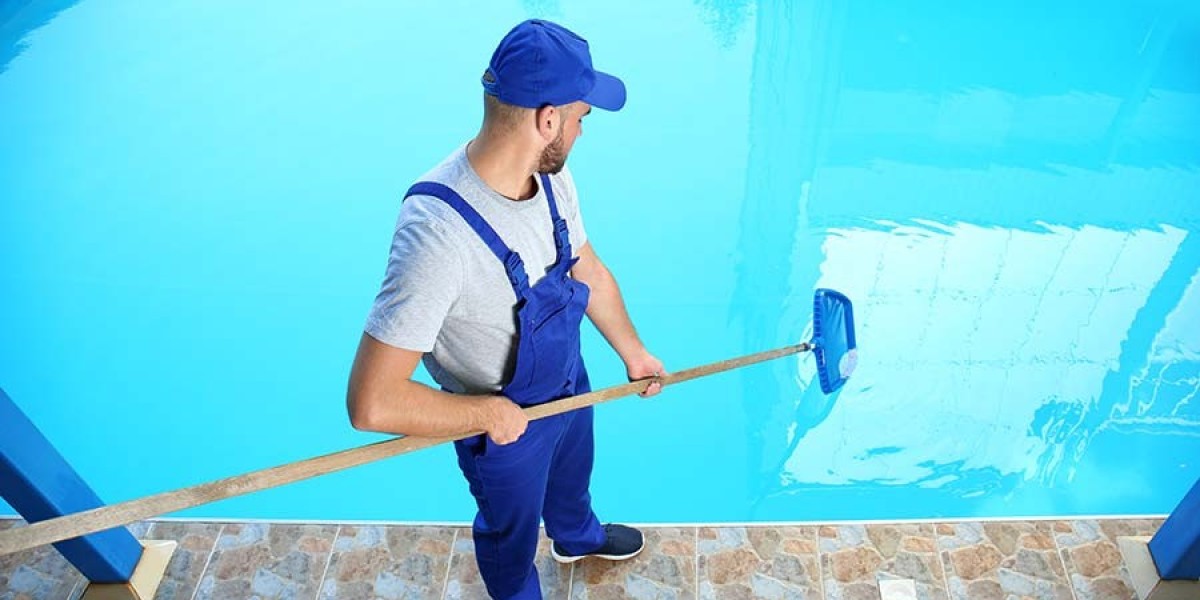Maintaining a swimming pool involves regular upkeep to ensure the water remains clean, clear, and safe for swimming. Proper pool maintenance not only enhances the aesthetic appeal of your pool but also extends its lifespan, prevents costly repairs, and ensures a healthy swimming environment. This guide will walk you through the essential aspects of Swimming Pool Maintenance from routine cleaning to balancing chemicals.
Why Pool Maintenance is Important
- Health and Safety: Regular maintenance prevents the growth of harmful bacteria and algae, ensuring that the water is safe for swimmers. Balanced water chemistry also prevents skin and eye irritation.
- Longevity of Equipment: Maintaining proper water chemistry and cleaning the pool regularly can extend the life of your pool equipment, such as pumps, filters, and heaters.
- Aesthetic Appeal: A well-maintained pool looks inviting and is more enjoyable to use. Clear, sparkling water enhances the overall look of your outdoor space.
- Cost Efficiency: Regular maintenance can prevent minor issues from becoming major repairs, saving you money in the long run.
Essential Pool Maintenance Tasks
- Skimming and Cleaning Debris
- Daily Skimming: Use a skimmer net to remove leaves, insects, and other debris from the pool surface daily. This prevents debris from sinking to the bottom and becoming more challenging to remove.
- Brushing: Brush the walls, steps, and corners of the pool weekly to remove algae and dirt buildup. Use a brush appropriate for your pool type (nylon for vinyl or fiberglass, stainless steel for concrete).
- Vacuuming: Vacuum the pool floor weekly to remove debris and sediment. You can use a manual vacuum or an automatic pool cleaner.
- Balancing Water Chemistry
- pH Levels: Maintain a pH level between 7.2 and 7.8. A balanced pH prevents irritation and ensures that sanitizers work effectively.
- Chlorine Levels: Chlorine is essential for killing bacteria and algae. Keep the chlorine level between 1.0 and 3.0 parts per million (ppm).
- Alkalinity: Total alkalinity should be between 80 and 120 ppm. It helps stabilize the pH levels and prevents fluctuations.
- Calcium Hardness: Maintain calcium hardness between 200 and 400 ppm. Proper levels prevent corrosion of pool surfaces and equipment.
- Cyanuric Acid: This stabilizer helps protect chlorine from being broken down by the sun. Maintain levels between 30 and 50 ppm.
- Shocking the Pool
- Regular Shocking: Shock the pool (add a high dose of chlorine) every one to two weeks, or after heavy usage, to kill bacteria and organic contaminants. This is also necessary after heavy rain, which can dilute chlorine levels and introduce contaminants.
- Shocking After Algae Growth: If you notice algae starting to grow, shock the pool to kill the spores before they spread.
- Maintaining Pool Equipment
- Filter Maintenance: Clean the filter regularly, following the manufacturer's instructions. Depending on the type of filter (sand, cartridge, or DE), backwashing, rinsing, or replacing cartridges may be necessary.
- Pump Maintenance: The pump should run long enough each day to circulate all the water in the pool (usually 8-12 hours). Check the pump regularly for leaks and ensure it’s functioning efficiently.
- Heater Maintenance: If you have a pool heater, have it inspected annually by a professional to ensure it’s working correctly and efficiently.
- Monitoring Water Levels
- Maintaining Proper Water Levels: Keep the water level halfway up the skimmer opening to ensure proper circulation. Refill the pool as needed, especially after heavy use or evaporation.
- Preventing and Treating Algae
- Algaecide: Use algaecide weekly as a preventative measure, especially in warm climates where algae growth is more common.
- Brushing and Shocking: If algae do appear, brush the affected areas and shock the pool immediately to prevent it from spreading.
- Winterizing the Pool
- Closing the Pool: If you live in a region with cold winters, it’s essential to properly close the pool at the end of the season. This involves balancing the water chemistry, lowering the water level, cleaning the pool, and covering it with a winter cover.
- Equipment Protection: Drain water from pumps, filters, and heaters to prevent freezing damage. Store any removable equipment indoors.
Professional Pool Maintenance Services
For those who prefer not to handle pool maintenance themselves, professional pool maintenance services are available. These services can include regular cleaning, chemical balancing, equipment inspection, and seasonal opening and closing of the pool. Hiring a professional can save time and ensure that all aspects of pool maintenance are handled correctly.
Conclusion
Regular swimming pool maintenance is crucial for ensuring a safe, clean, and enjoyable swimming environment. By keeping up with daily, weekly, and seasonal tasks, you can maintain the beauty and functionality of your pool while preventing potential health hazards and costly repairs. Whether you choose to maintain your pool yourself or hire a professional service, the key is consistency and attention to detail. With proper care, your pool will provide years of enjoyment for you and your family.








